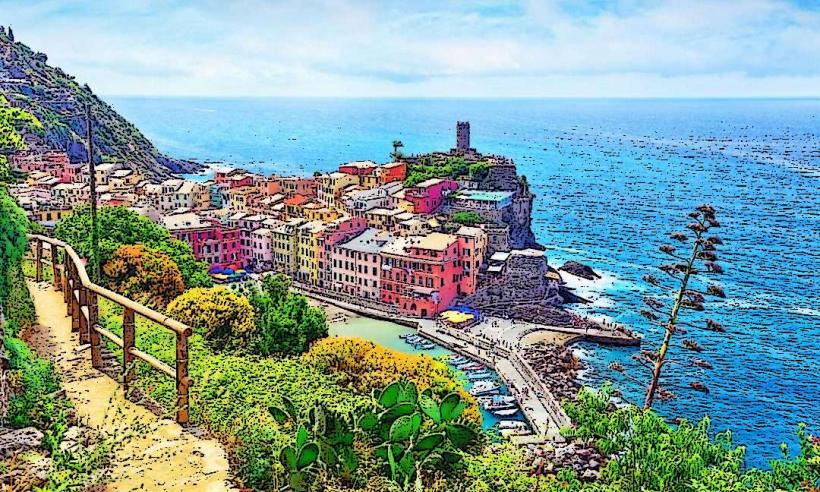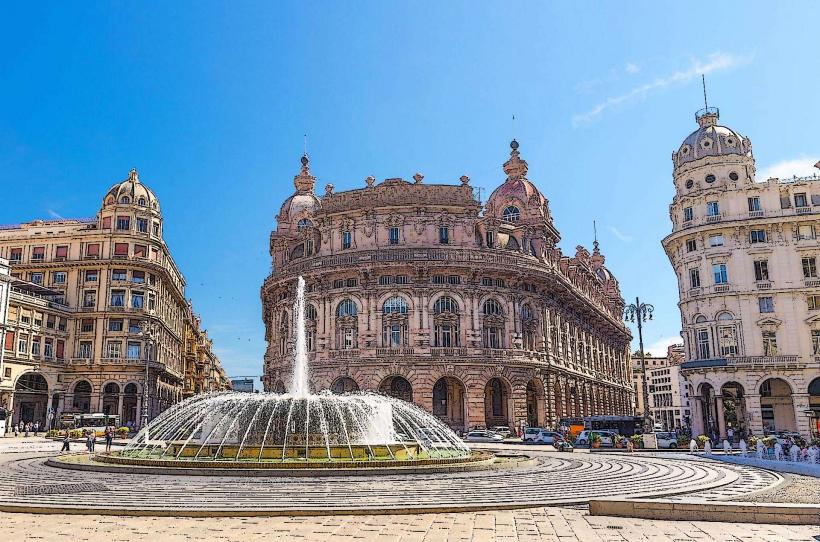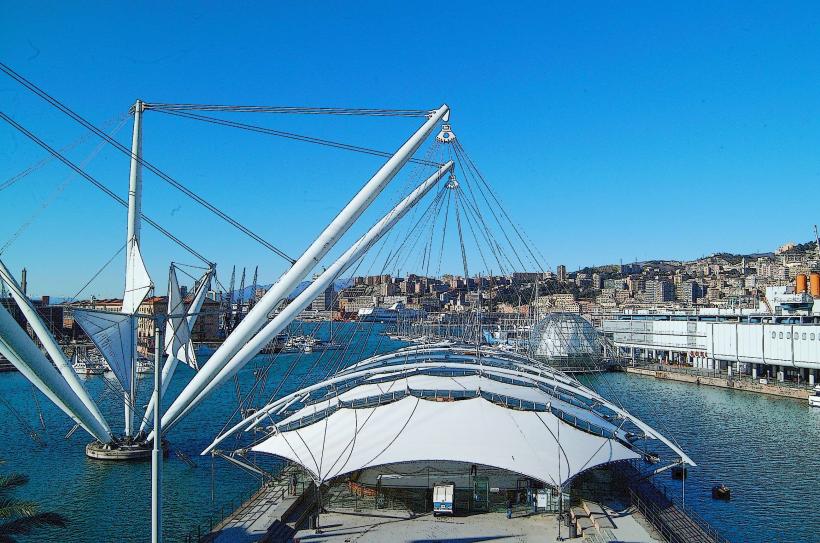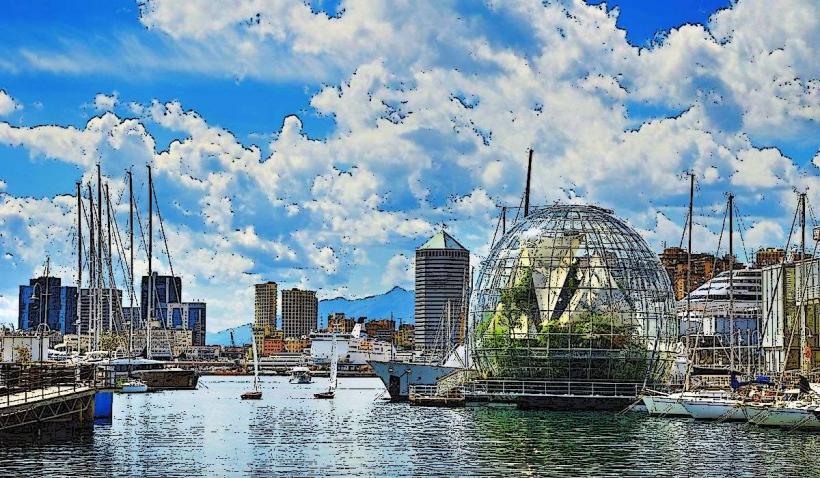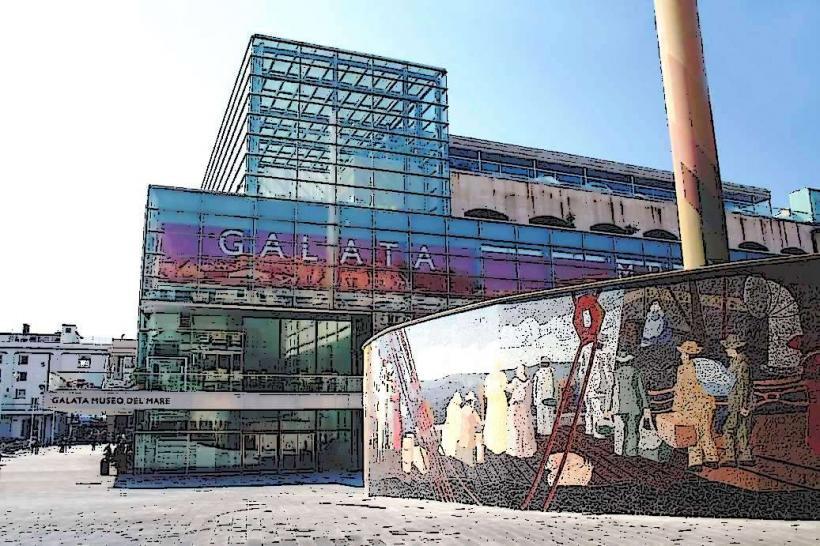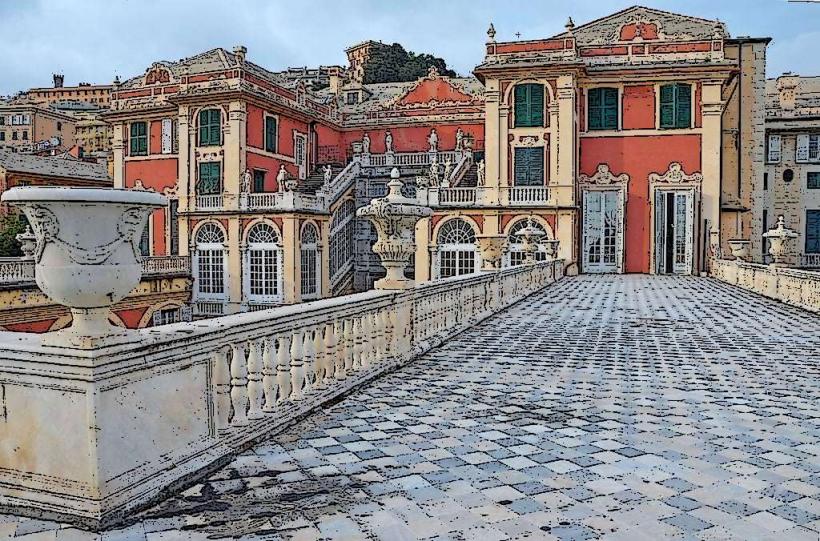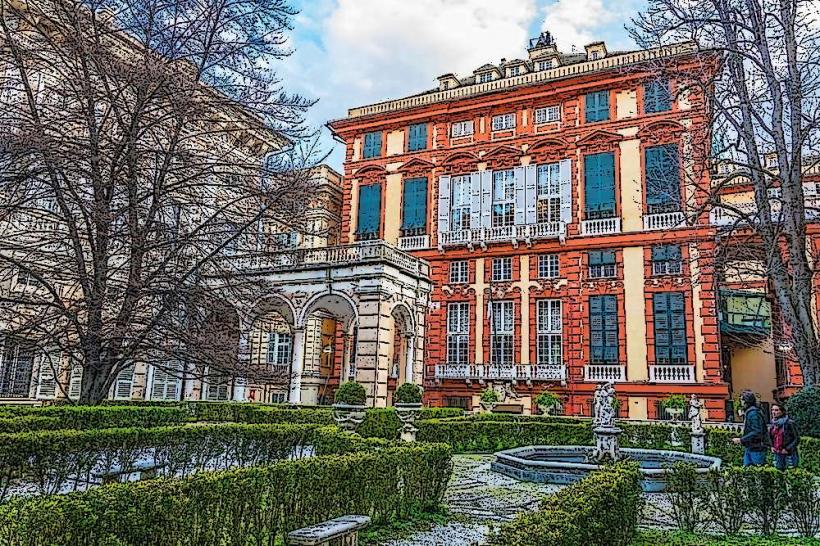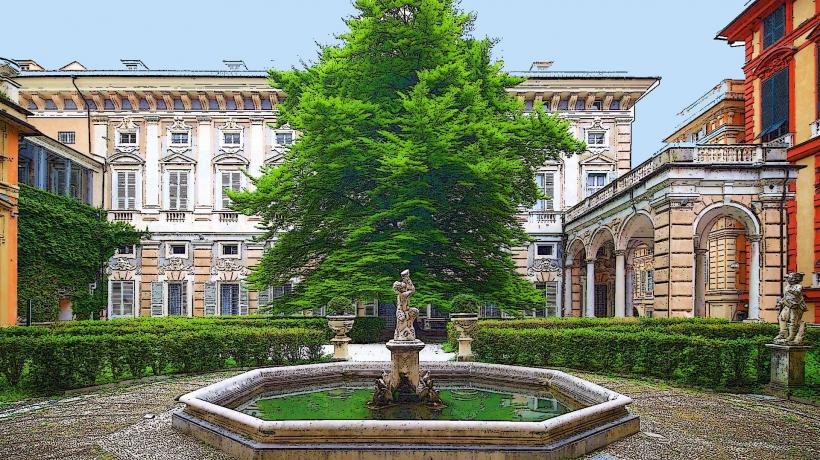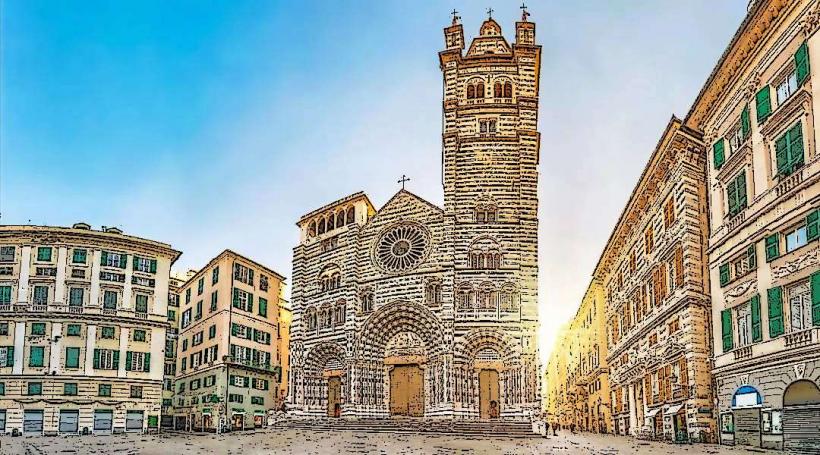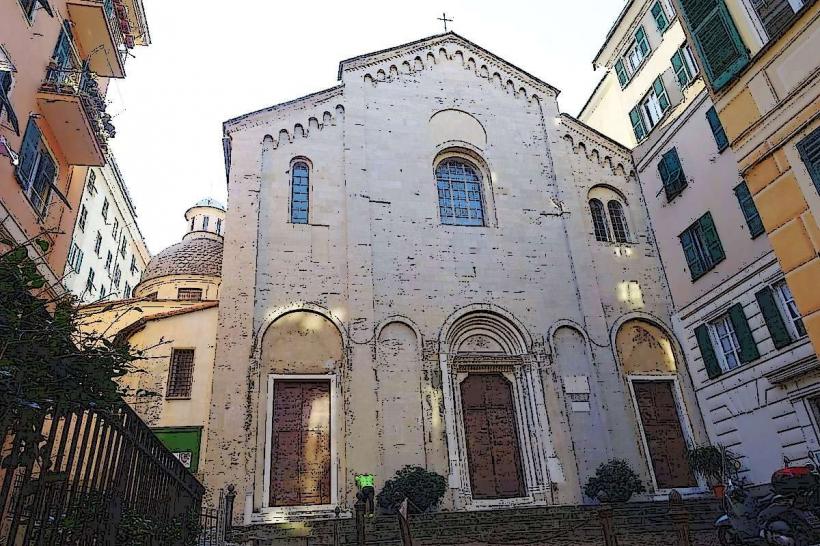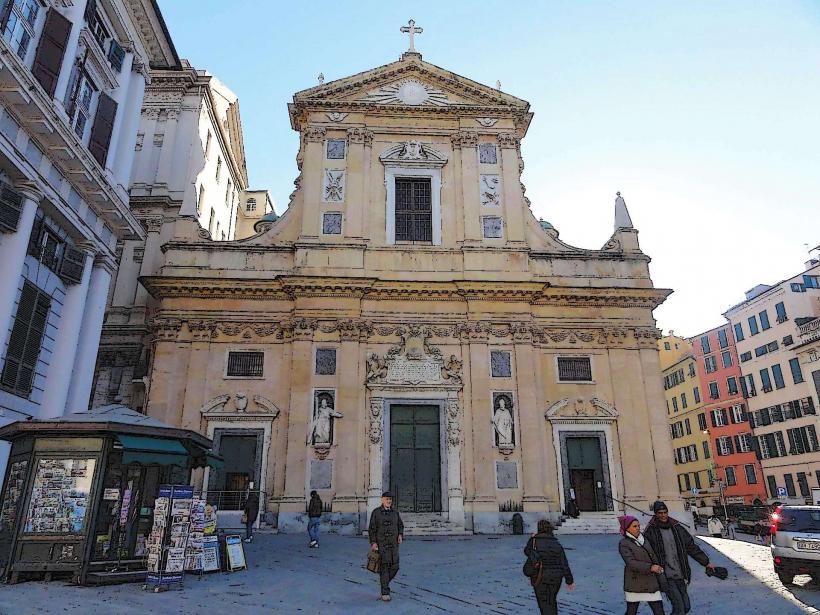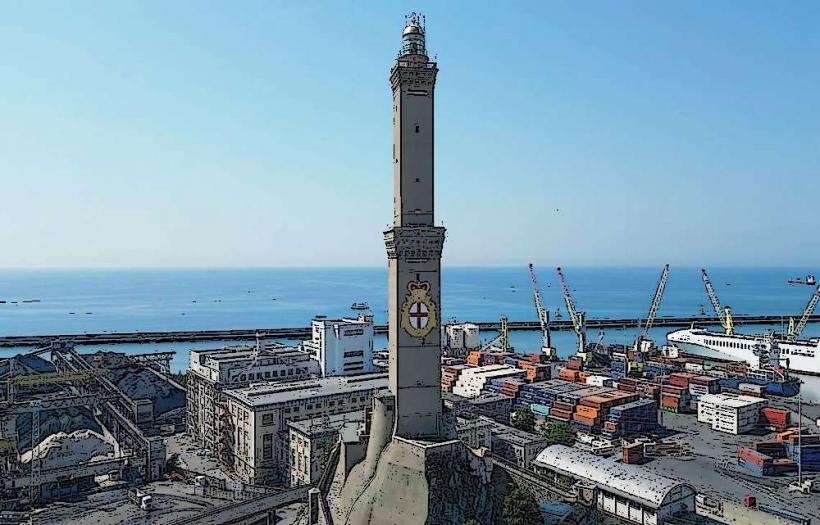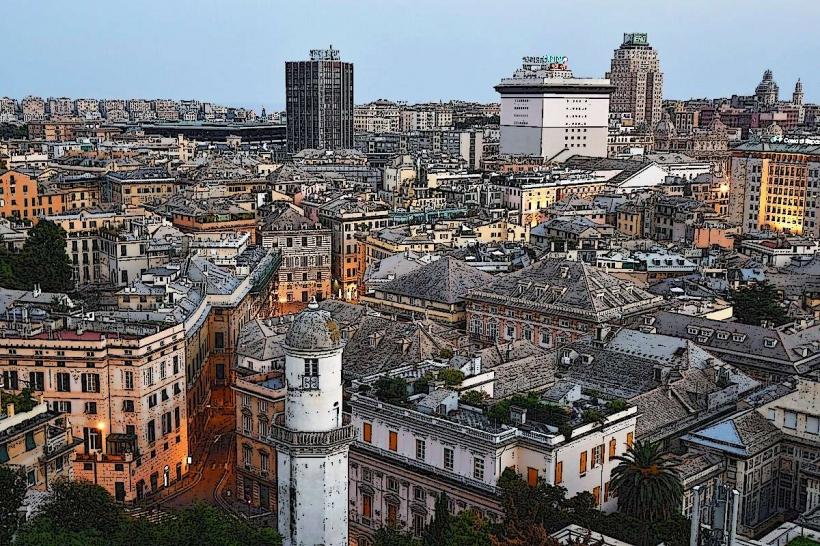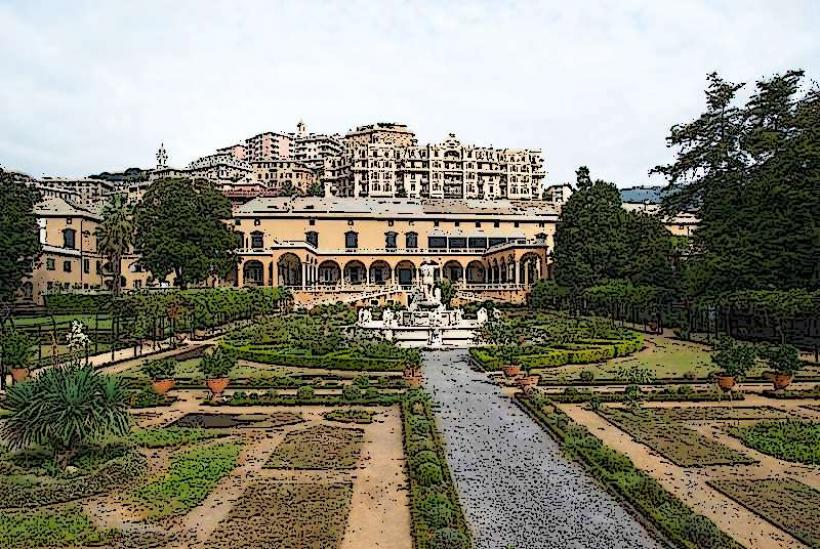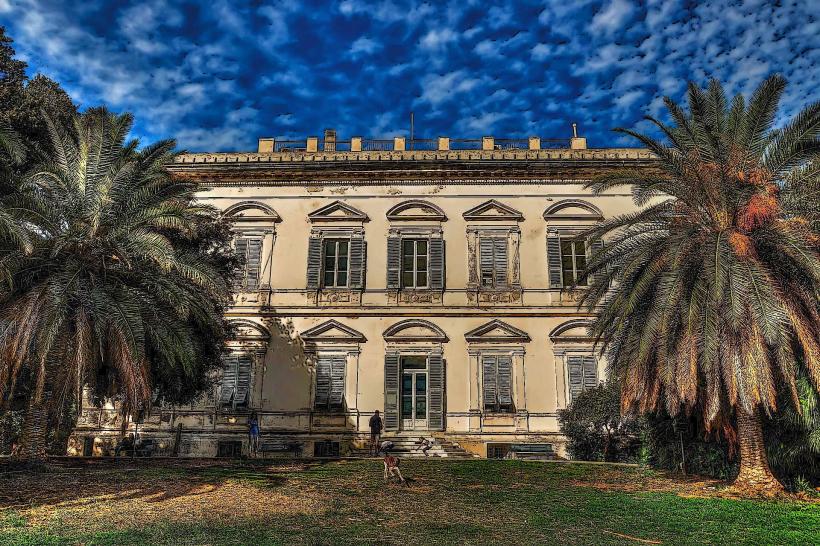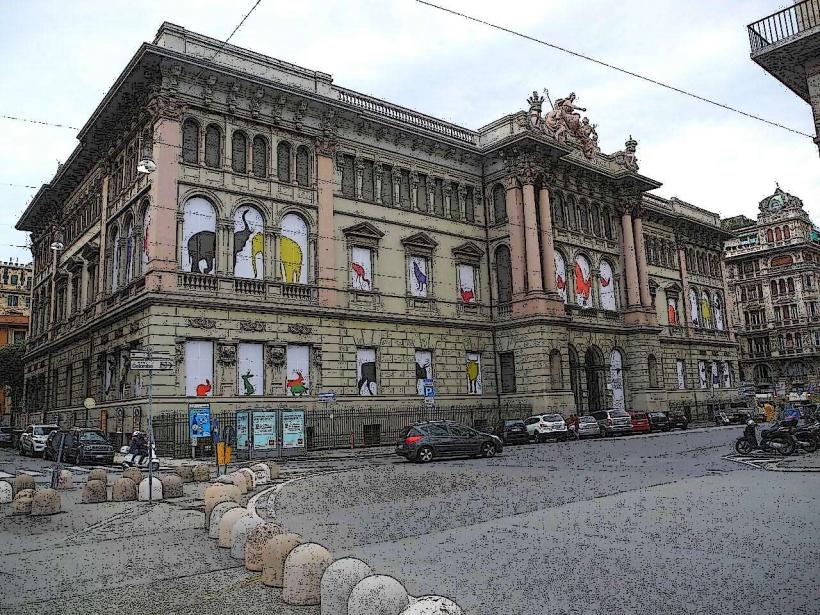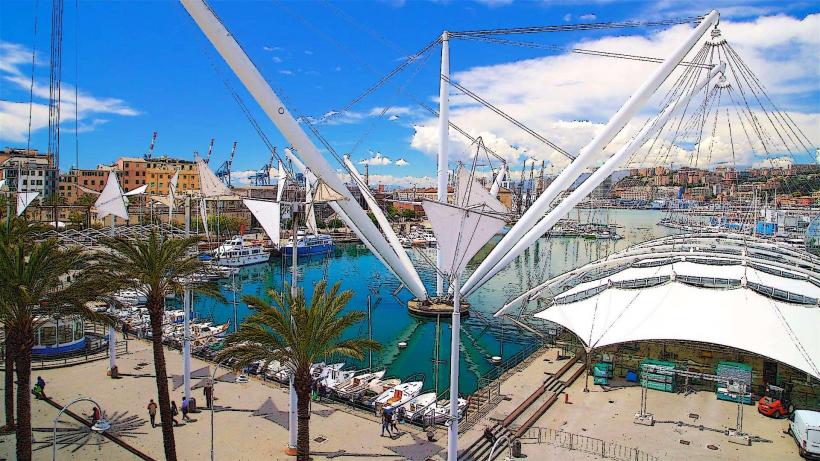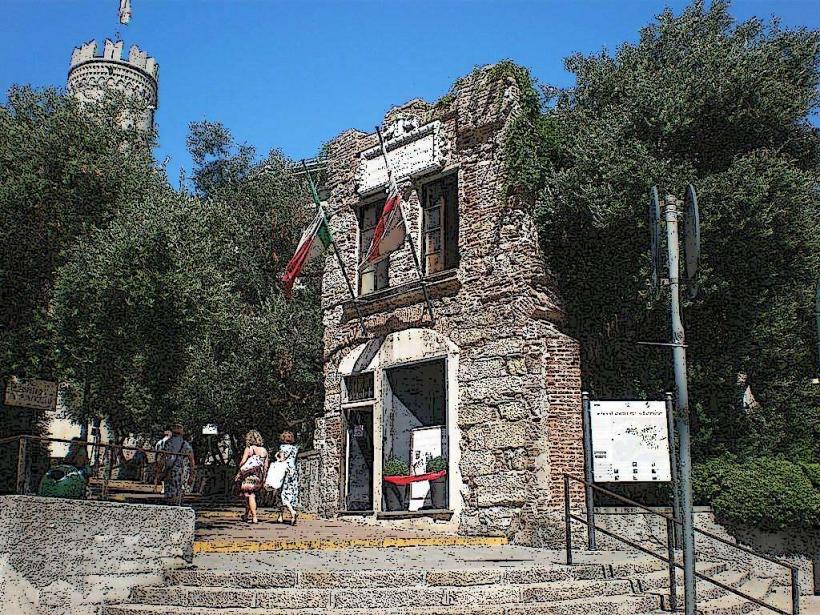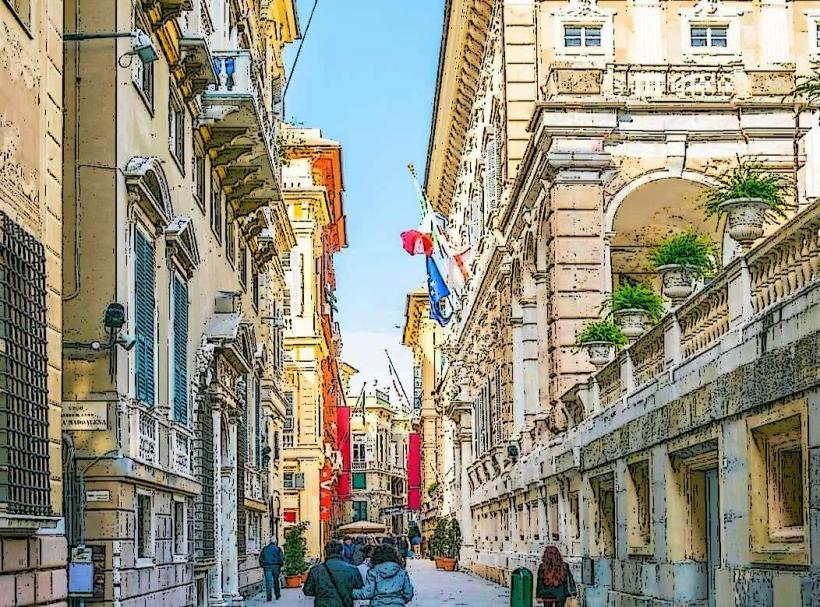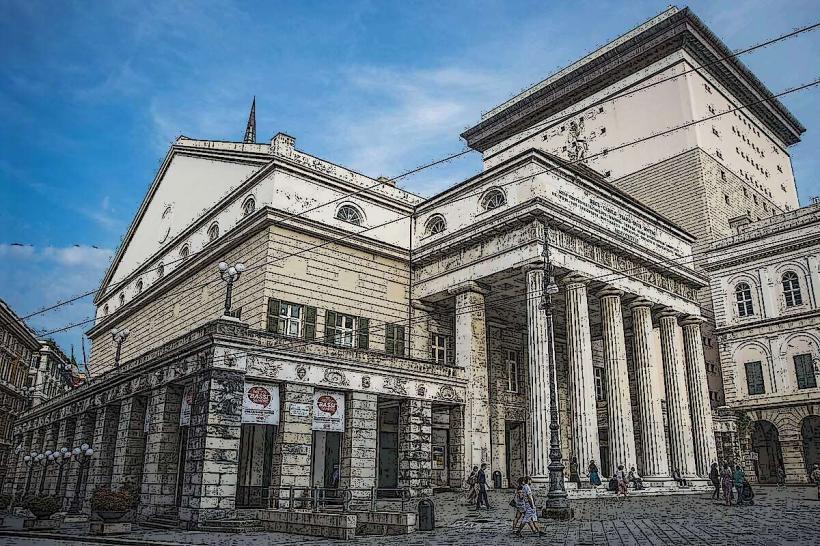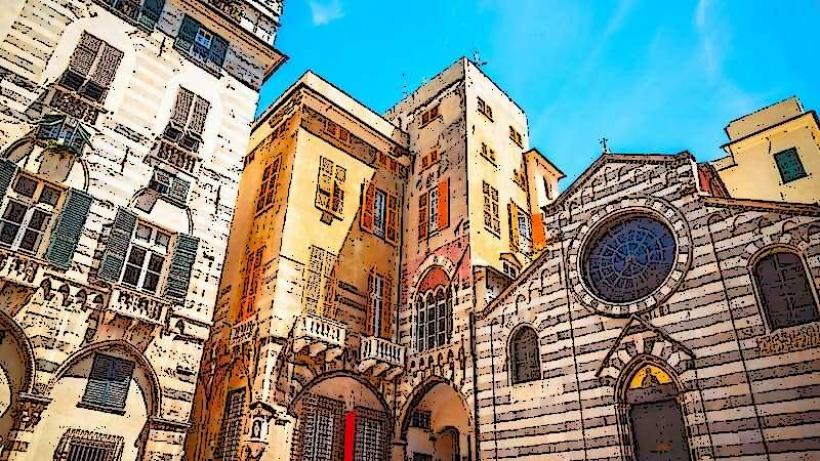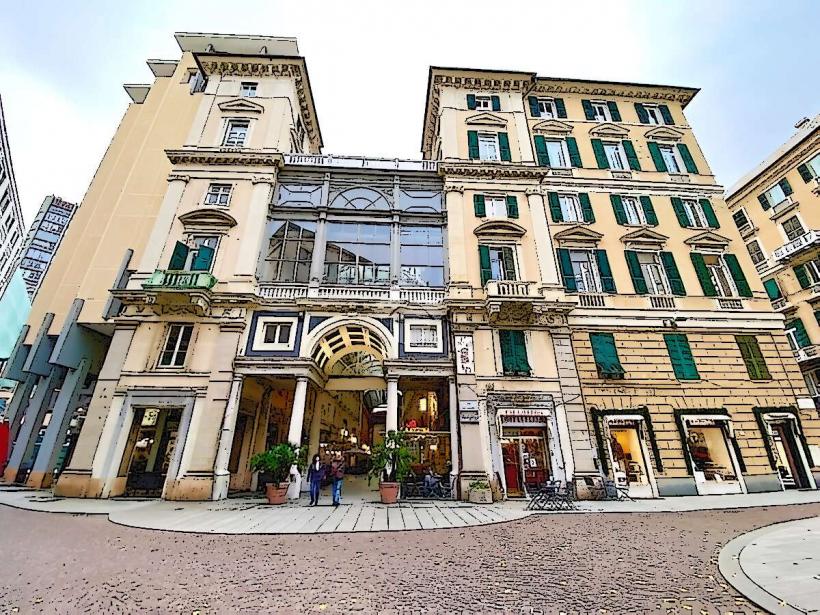Information
Landmark: Palazzo DucaleCity: Genoa
Country: Italy
Continent: Europe
Palazzo Ducale (Doge’s Palace) is one of the most significant and historic landmarks in Genoa, Italy. Situated in the heart of the city’s Piazza De Ferrari, the palace has served as the seat of power for the Doge (the elected leader of the Republic of Genoa) and remains a key symbol of the city's rich history and political heritage.
Key Features and Highlights:
Historical Significance:
- Palazzo Ducale was originally built in the 13th century as the residence of the Doge of Genoa, the head of the Republic of Genoa, which was one of the most powerful maritime republics of medieval Italy.
- The palace has been the center of political power in Genoa for centuries and has undergone several expansions and modifications over time, reflecting changes in the political and cultural landscape of the city.
- In the 19th century, the palace was partially repurposed for public use and became the seat of various municipal authorities. Today, it houses both government offices and cultural institutions, including museums and galleries.
Architecture:
- The Palazzo Ducale is an excellent example of Renaissance architecture, blending elements of medieval and Baroque styles. Its original structure was fortified and functional, designed to reflect the power and prestige of the Genoese Republic.
- The main façade of the palace is adorned with columns and sculptural reliefs, giving it an imposing presence. The interior of the palace is equally grand, with elegant rooms, richly decorated ceilings, and frescoed walls that showcase the artistic achievements of the time.
- The Great Hall (Salone del Maggior Consiglio) is particularly impressive. This grand space was used for official meetings of the Magistrates of Genoa and is adorned with frescoes, statuary, and wooden ceilings.
Cultural and Artistic Role:
- Today, Palazzo Ducale serves as a major cultural venue in Genoa, hosting art exhibitions, musical performances, and theatrical productions. The palace has a diverse program of events, making it a vibrant center for the arts in the city.
- The palace also hosts the Genoa City Museum, which highlights the history of the city and its ruling families. Temporary art exhibitions are regularly held, focusing on various artists, themes, and periods in Italian and international art history.
- The Galleria Nazionale di Palazzo Ducale is part of the museum complex and features a rich collection of artworks, including paintings, sculptures, and historical objects.
Theatrical and Concert Spaces:
- The palace features several theater rooms and performance halls, which are used for cultural events. The Teatro del Palazzo Ducale is a venue for concerts, opera performances, and other cultural presentations. Its elegant interior makes it an ideal setting for classical performances.
- The Palazzo Ducale also frequently hosts international festivals and conferences, providing a platform for both contemporary and classical cultural expression.
Famous Rooms and Artworks:
- The Sala del Maggior Consiglio (Hall of the Great Council) is the largest and most famous room in the palace. It was the meeting place for the Great Council of Genoa, where important political and diplomatic decisions were made. The hall is decorated with historical frescoes and features large windows that offer a view of Piazza De Ferrari and the surrounding area.
- The Sala del Minor Consiglio and other smaller rooms are similarly ornate and house various works of art that reflect the palace’s long history.
Public Square and Surroundings:
- Palazzo Ducale is located in Piazza De Ferrari, the main square of Genoa, which is a focal point for both local life and tourism. The square is surrounded by other important landmarks, including the Teatro Carlo Felice and the Palazzo della Regione Liguria.
- The palace’s proximity to the square makes it a popular starting point for exploring the historic center of Genoa.
Visitor Experience:
- The Palazzo Ducale is open to the public, and visitors can tour its grand halls, admire the architecture, and explore the various exhibitions and art collections. Audio guides and guided tours are available to help visitors understand the historical and artistic significance of the site.
- The palace also houses a café and a bookshop, where visitors can relax and purchase souvenirs related to Genoa’s history and cultural heritage.
Events and Exhibitions:
- The palace is known for hosting prestigious art exhibitions, often featuring works by famous artists such as Caravaggio, Rubens, and Van Gogh. It is a central part of Genoa’s cultural calendar, offering events that appeal to a wide range of tastes and interests.
- Temporary exhibitions are frequently held, covering a variety of themes such as modern art, history, photography, and international art movements.
In Summary:
Palazzo Ducale is one of Genoa’s most significant cultural and historical landmarks. Its stunning Renaissance architecture, combined with its role as the center of political power during the Republic of Genoa, makes it an essential part of the city’s heritage. Today, the palace continues to serve as a dynamic cultural venue, hosting art exhibitions, musical performances, and historical events. Whether you are interested in the history of Genoa, Renaissance art, or contemporary exhibitions, Palazzo Ducale is a must-visit site for anyone exploring the city.

